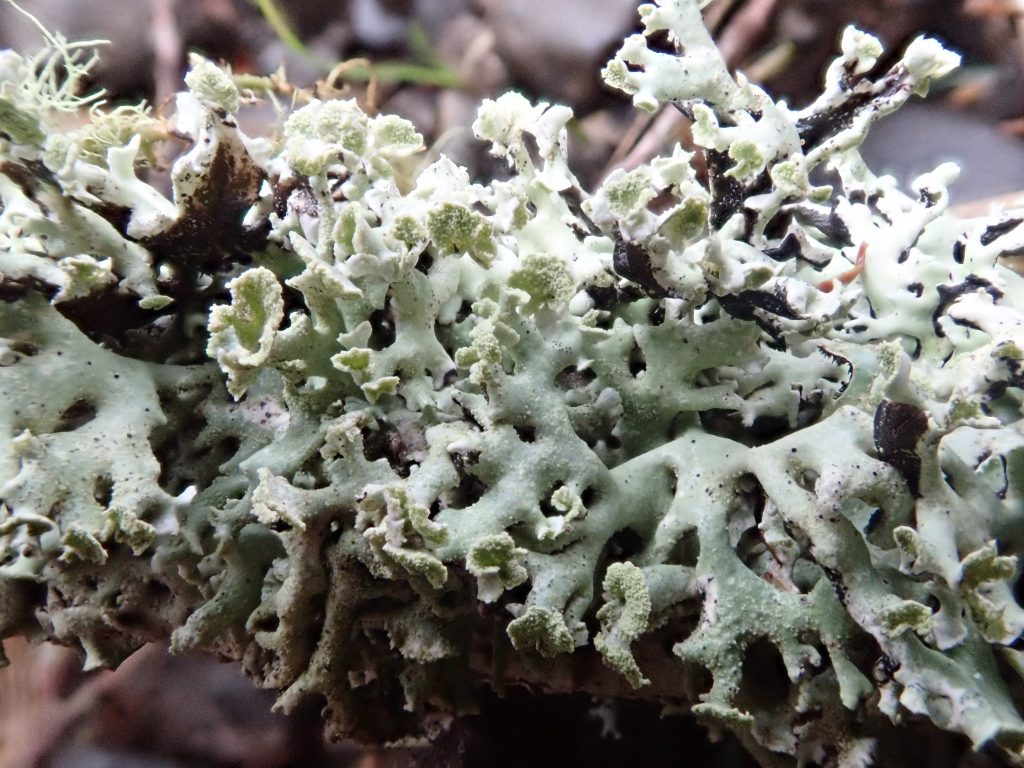
This is a very common lichen found throughout the PNW. Hypogymnia as a genus are distinctive and readily recognizable. Figuring out the species is not so easy, and usually requires magnification and a key.
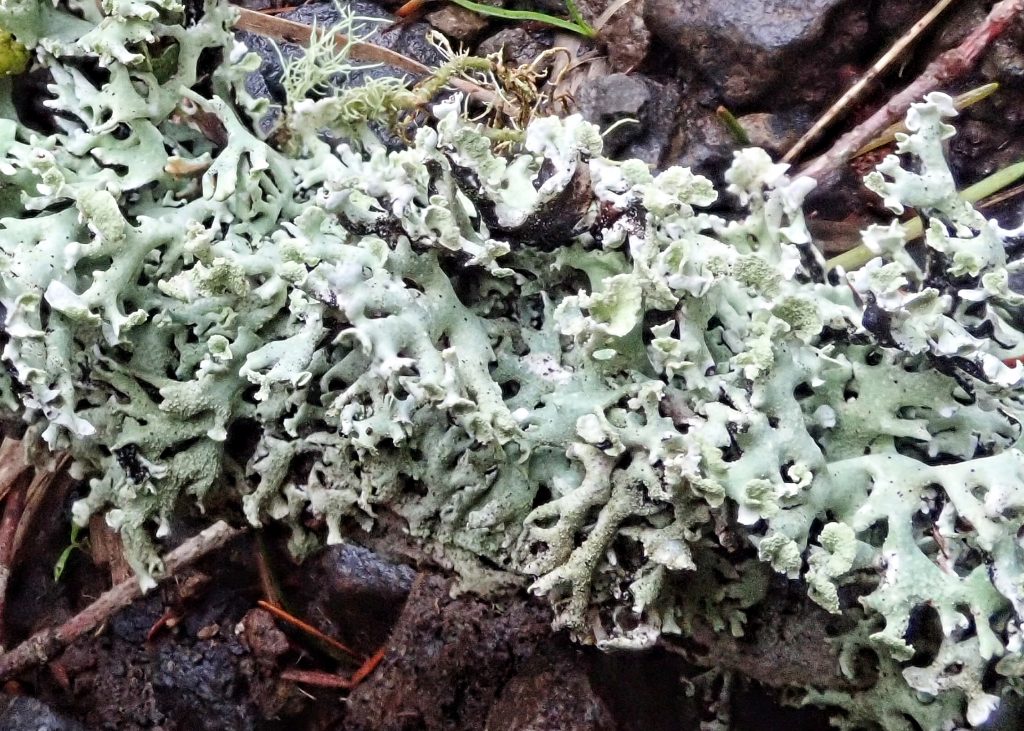
It also frequently requires testing with chemical reagents, a level of commitment that I had heretofore been unwilling to undertake. But I finally gave in and got the required chemicals, and it was necessary in this case, but only because I had two Hypogymnia growing together. In fact all of these photos probably have some Hypogymnia enteromorpha growing with the main subject of Hypogymnia physodes. Normally these bursting lobe tips would have been diagnostic. I will write more about this spot testing process when I profile the other lichen.
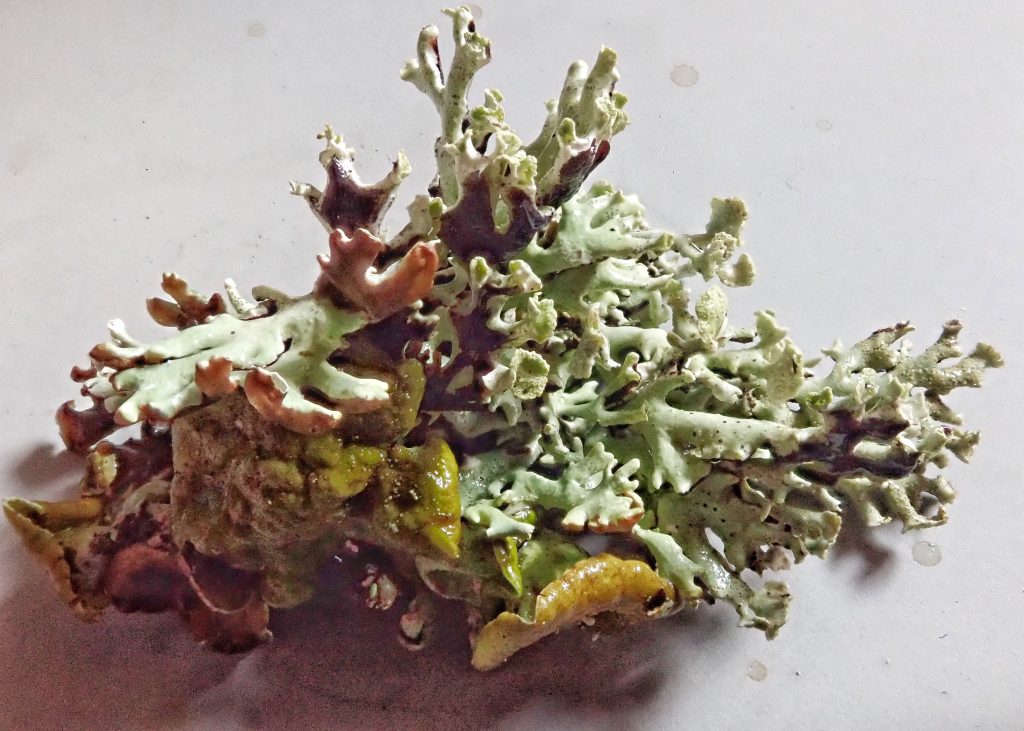
Description– Hypogymnia physodes is a small to medium sized, greenish grey to grey lichen, with a black ventral surface which is mostly lacking in rhizines. The thallus is considered foliose because it has distinct dorsal and ventral sides, but it is often tubular and somewhat erect. It lacks isidia, but has many soredia, which are produced in soralia in the lobe tips. These lobe tips burst open in a characteristic lipped fashion. Edited to amend- My friend Steve Sheehy just clued me in to a characteristic I had missed; The lobes are hollow and for this species the bottom/floor is light/white and top/ceiling is dark/black.
Similar species– Only H. vittata has similar bursting lobe tips, but it is P- on the medulla, the floor and ceiling of the hollow lobe are both dark, and it is a rare coastal lichen found primarily in BC in our region.
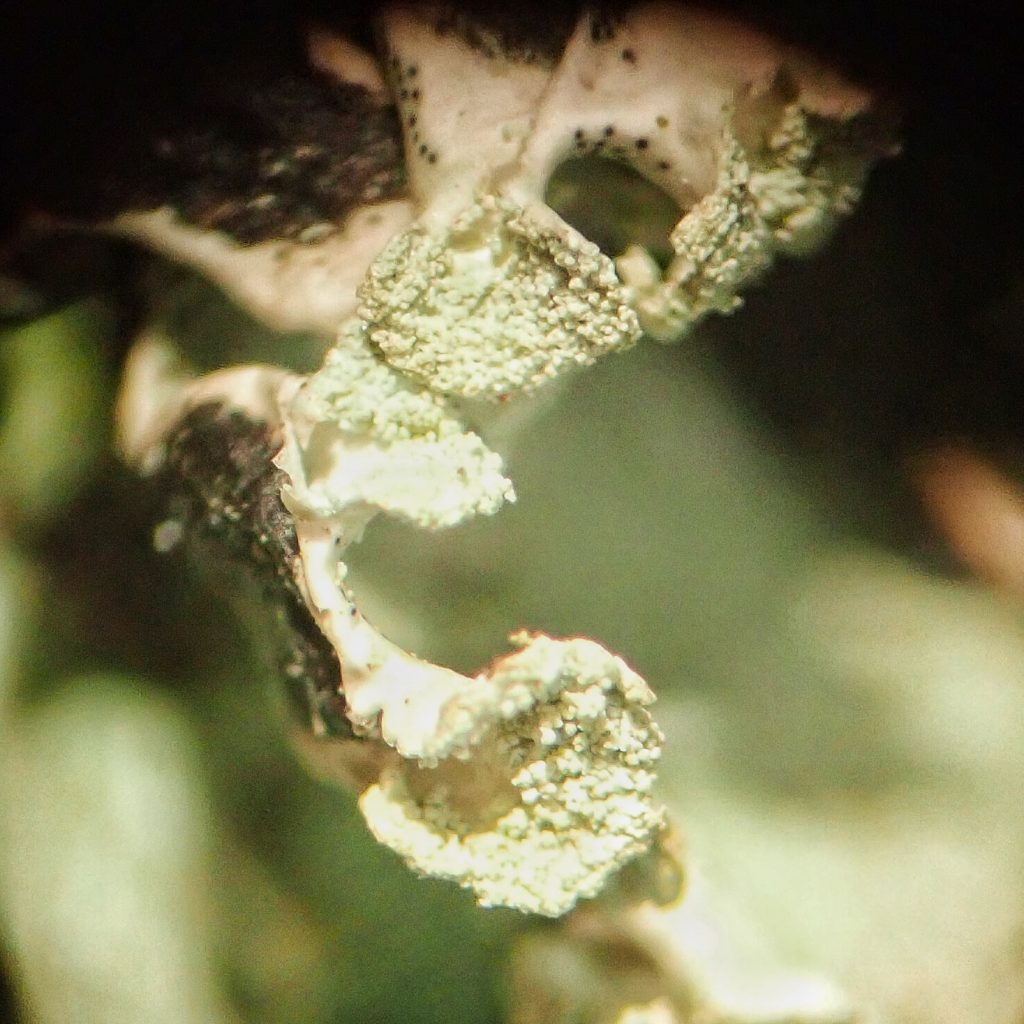
Habitat-Can be found almost anywhere there is woody substrate.
Range– Circumpolar; region wide in appropriate habitat.
Eaten by– The larvae of some moths, such as Clemensis umbrata, are known to feed on this lichen, as do some slugs and snails. Researchers have found that extracts of Hypogymnia sp. have antibacterial and antioxidant properties, as well as being enzyme inhibitors and cytotoxic to cancer cells.
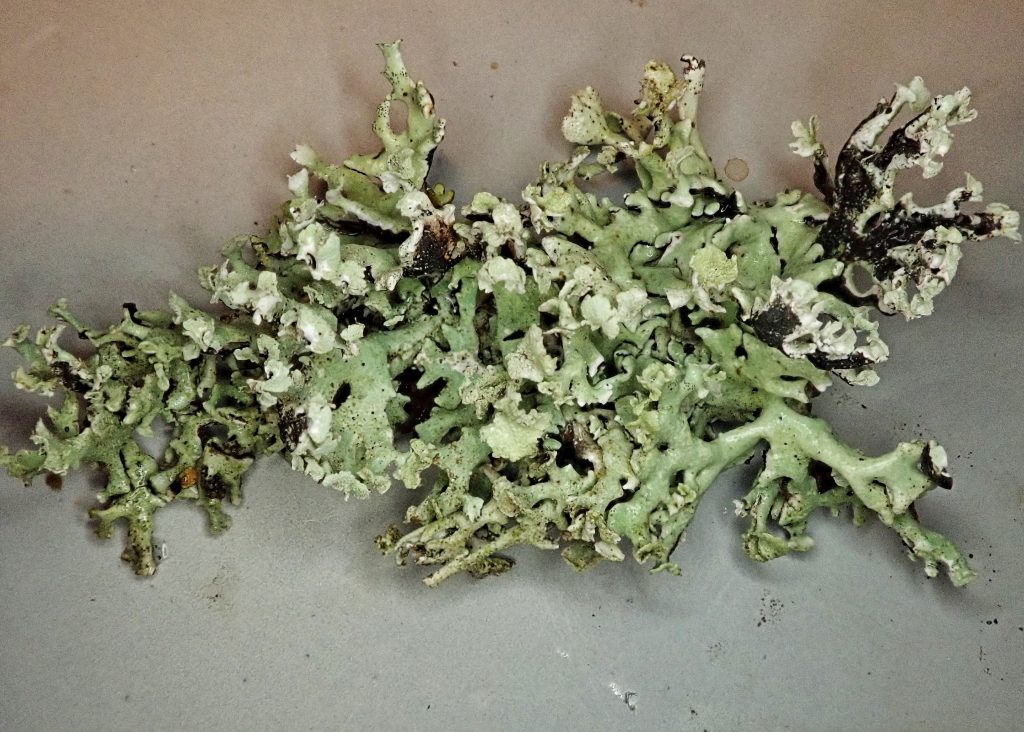
Etymology of names– Hypo- means under or below in Greek, and -gymnia means naked, bare in Greek. This probably refers to the lack of rhizines in this genus. The specific epithet physodes is more obscure, being Greek for ‘like a bellows’. But in botanical terms it usually means ‘bladder like’, and thus may reference the bursting lobe tips. This species contains the secondary metabolites physodic acid and physodalic acid.
And a quick shoutout to the smart and knowledgeable folks at the FB group Botanical Names Demystified for helping me with these and other scientific names. Thanks, folks!
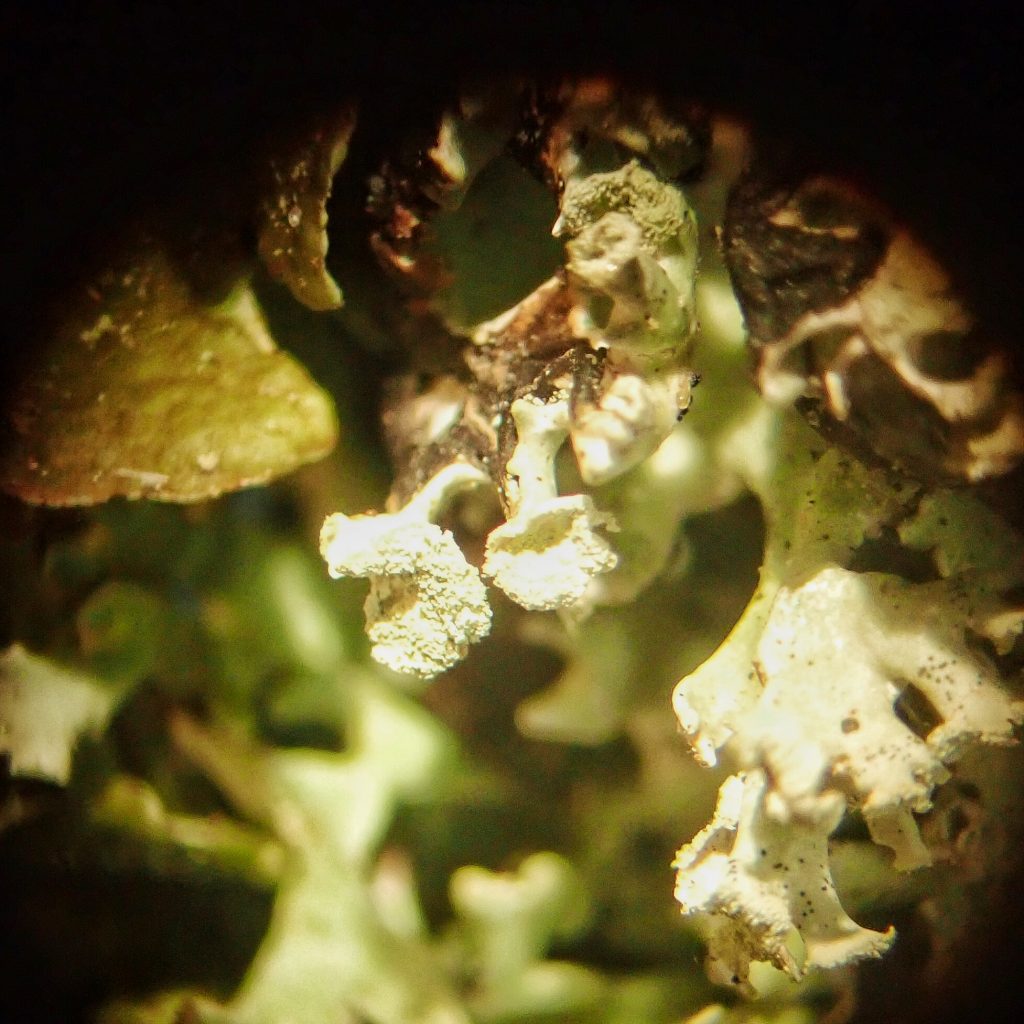
https://lichenportal.org/cnalh/taxa/index.php?taxon=Hypogymnia%20physodes
https://ohiomosslichen.org/lichen-hypogymnia-physodes/
https://www.ncbi.nlm.nih.gov/pmc/articles/PMC3813136/
https://www.waysofenlichenment.net/lichens/Hypogymnia%20physodes
https://lichens.twinferntech.net/pnw/species/Hypogymnia_physodes.shtml
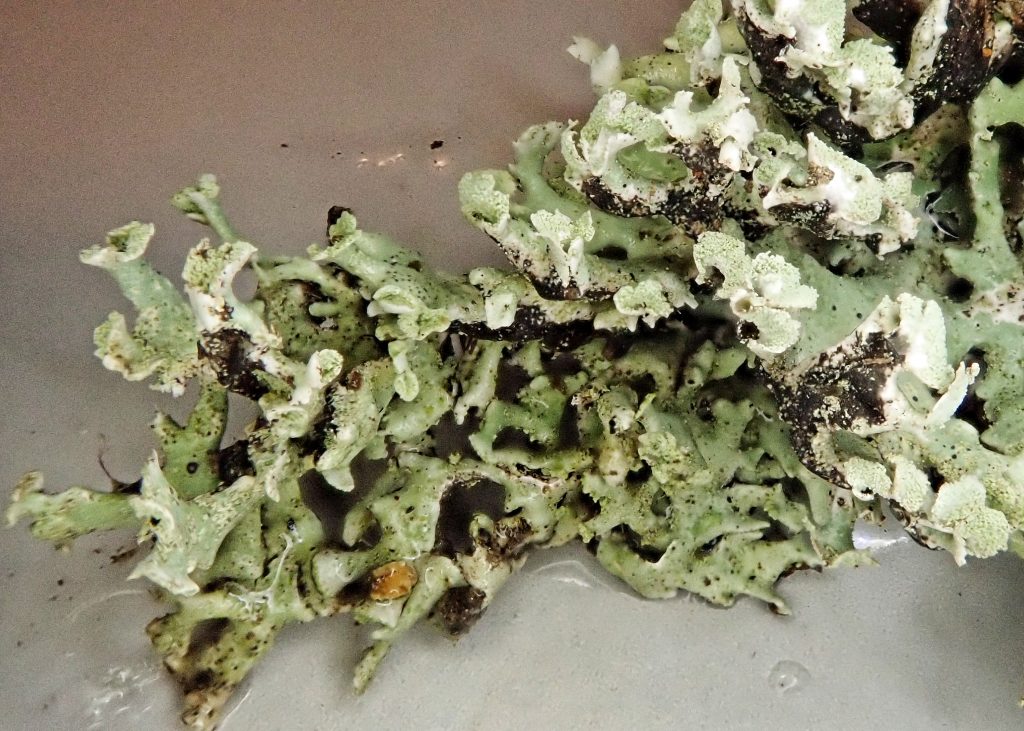
Amazing to discover (thanks to you) how many different kinds of lichen and mosses there are – I had no idea!
👍☺️